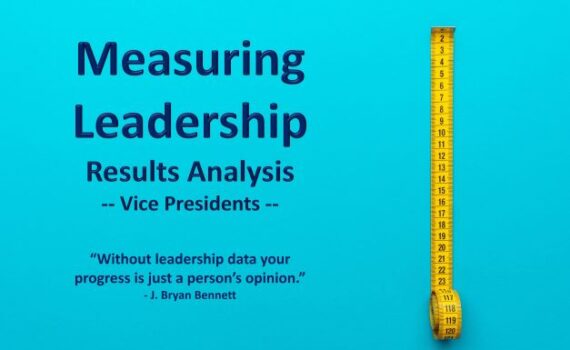Leadership Impact Assessment Results – Vice Presidents
Category : Uncategorized
Recently, we began releasing analysis from our Leadership Impact Assessment results. In the last newsletter, we analyzed results for the C-Level executives in the data. It’s important to measure the outcomes from leadership training, but most organizations don’t incorporate it for one reason or another. Without any way of measurement, the individual and/or organization can’t empirically know what needs to be improved.
“Without data you’re just another person with an opinion.”
– W. Edwards Deming, Data Scientist
This data is from people who have taken the assessment during one of our onsite or online leadership training programs through January 31, 2022.
Previous newsletters on this topic which explains the dimensions used in the analysis as well as how the green boxes (with vertical lines) and red boxes (with horizontal lines) relate to the population average (all participants), can be found at:
- Leadership Development Programs Need to be More Accountable
- Measuring Leadership: A Case Study
- Leadership Impact Assessment Results – C-Level Execs
In this post, we will examine results from the self-reported Vice President level participants, which comprise 11% of the population.

In this analysis, we find the Vice Presidents mostly above the population average (green boxes) and only below the average for the Reflecting and Coaching dimensions. This contrasts with the C-Level participants who were below the population average on all but three dimensions, Visioning, Reflecting and Coaching. While the C-Level participants may be on leadership autopilot at this point in their career, the Vice President participants are still aspirational and remain focused on getting to the next level.
The challenge for the VP population is if they are aspirational and trying to reach the C-Level, then they need to focus more on their Reflecting habits and Coaching relationships. Both will make them a better leader. Reflecting is that internal voice that helps the leader examine how they performed in their leadership encounters. Coaching is that external voice that provides feedback on how the leader performed and provides suggestions for future encounters.
In addition to individual comparisons to the population average or organization levels, this tool can be used to also compare:
- individual or group results to an organization’s internal averages when used as a group measurement tool.
- individual or group results to organization levels using internal or external peer results.
- individual or group results to industry results.
What do you believe could be the reason for the Vice President results shown? Add your thoughts in the comments below.
Coming next – Directors.
